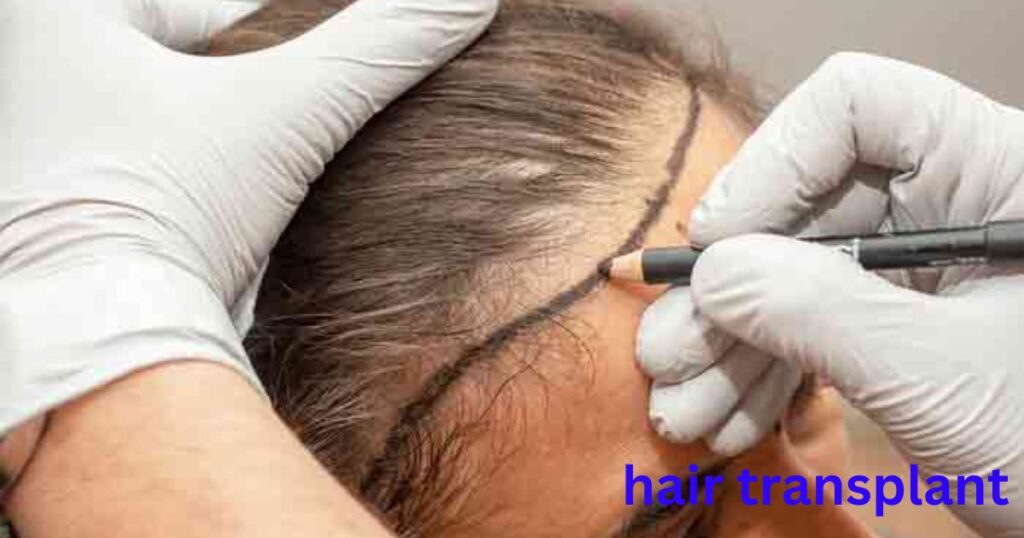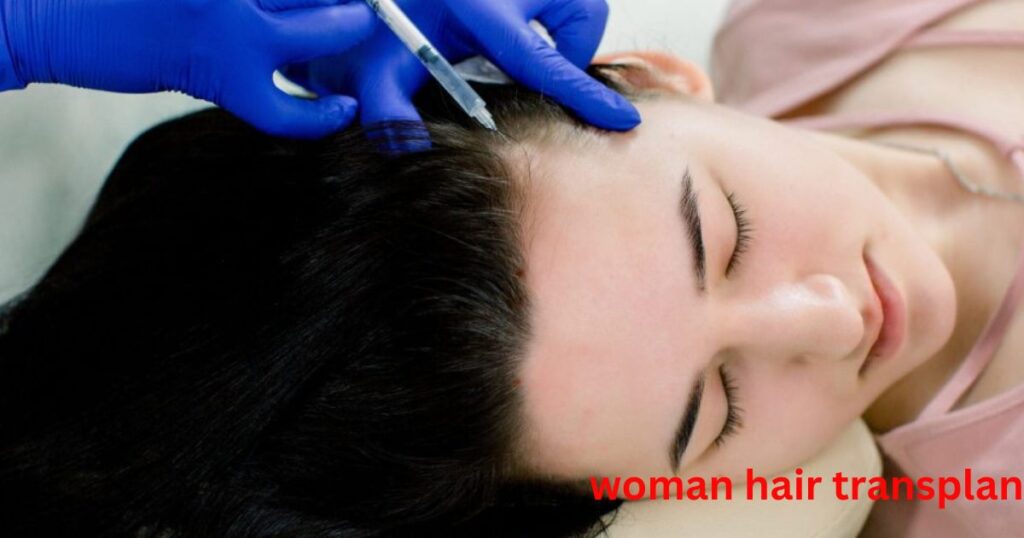A woman’s hair transplant is a surgical procedure designed to address hair loss in women. During the procedure, hair follicles are extracted from a donor area and transplanted into areas with thinning or no hair.
Embarking on the journey to restore your hair and confidence is exciting, but the question lingering on many minds is, How much does a woman’s hair transplant cost? Let’s unravel the mystery behind the price tag and discover the transformative possibilities awaiting you.
The cost of a woman’s hair transplant varies based on factors like the extent of hair loss, the chosen transplantation technique, and the clinic’s location. On average, it can range from a few thousand to several thousand dollars. It’s essential to consult with clinics, inquire about financing options, and consider the potential long-term benefits before making a decision.
the Difference Between Hair Loss in Men and Women
Men commonly experience receding hairlines and visible bald spots, typically following a distinct male-pattern baldness. On the other hand, women often face diffuse thinning across the entire scalp, making it less noticeable at first glance but impacting overall volume.
The causes of hair loss also vary between genders. Men’s hair loss is frequently attributed to genetic factors and hormonal changes, specifically the conversion of testosterone to dihydrotestosterone (DHT). In contrast, women may experience hair loss due to hormonal fluctuations related to pregnancy, childbirth, or menopause, as well as conditions like polycystic ovary syndrome (PCOS) and thyroid disorders.
Are all Women Ideal Candidates For Hair Transplant Surgery?
While hair transplant surgery can be transformative, not all women are ideal candidates. Several factors influence eligibility, including overall health, the extent of hair loss, and realistic expectations. It’s essential for women considering this procedure to undergo a thorough consultation with the experienced professionals at Royal Cosmetic Surgery.
During the consultation, the medical team assesses individual suitability for a hair transplant, considering factors like the stability of donor hair, overall health, and the likelihood of successful outcomes. This personalized approach ensures that women who choose to undergo the surgery have a clear understanding of the potential results and realistic expectations.
Types of Hair Transplants Available for Women at Royal Cosmetic Surgery
Royal Cosmetic Surgery offers a range of hair transplant options for women, tailoring the approach to meet individual needs and preferences. The Follicular Unit Extraction (FUE) technique involves extracting individual hair follicles from a donor site and transplanting them to the recipient area. This minimally invasive method ensures a quicker recovery and leaves minimal scarring.
FUT vs FUE Method of Hair Transplant
When considering hair transplant methods, individuals often encounter the choice between Follicular Unit Transplantation (FUT) and Follicular Unit Extraction (FUE). FUT involves harvesting a strip of tissue from the donor area, while FUE individually extracts follicles. The main difference lies in the extraction technique, influencing factors like scarring, recovery time, and eligibility.
The Procedure of Hair Transplant
The hair transplant procedure involves several key steps. First, hair follicles are carefully harvested from the donor area, typically the back of the scalp. Subsequently, these follicles are meticulously implanted into the recipient area with precision. The success of the procedure relies on the surgeon’s skill, adherence to post-operative care, and the patient’s overall health.
Protein-rich plasma (PRP) Method of Hair Transplant
In the Protein-Rich Plasma (PRP) method, a patient’s blood is drawn and processed to concentrate the plasma, which is rich in growth factors. This concentrated PRP is then injected into the scalp to stimulate hair follicles, promoting natural hair growth. This non-surgical method is often used in conjunction with traditional transplant techniques for enhanced results.
Cost of Female Hair Transplant at Royal Cosmetic Surgery
At Royal Cosmetic Surgery, the cost of a female hair transplant is tailored to individual needs, ensuring a personalized and affordable solution. The clinic understands the financial considerations involved in such transformative procedures. Prices may vary based on factors like the extent of hair loss and the chosen transplantation technique.
The dedicated team at Royal Cosmetic Surgery aims to make Women’s Haircut Take, this confidence-boosting experience, accessible to all women, providing transparent pricing and flexible financing options to accommodate different budgets.
Benefits of Hair Transplant
A hair transplant comes with numerous benefits, foremost being the significant boost it provides to an individual’s confidence and self-esteem. The procedure offers a natural-looking result, seamlessly blending transplanted hair with existing strands. Unlike temporary solutions, such as wigs or topical treatments, a hair transplant is a long-term and permanent fix for hair loss.
- Enhanced Appearance and Confidence: A successful hair transplant not only restores natural-looking hair but also enhances overall appearance. This aesthetic improvement often leads to increased self-confidence and a positive self-image.
- Permanent Solution to Hair Loss: Unlike temporary remedies, a hair transplant provides a lasting solution. Once transplanted, the hair continues to grow naturally, offering a permanent and reliable remedy to hair loss.
- Natural-Looking Results: Advanced transplant techniques ensure that the transplanted hair seamlessly blends with existing hair, creating a natural appearance. The results are undetectable, providing individuals with a renewed and authentic look.
- Psychological and Emotional Well-Being: Beyond the physical benefits, a successful hair transplant positively impacts psychological and emotional well-being. Many individuals experience a boost in self-esteem, leading to improved mental health and a more fulfilling life.
Cons of Hair Transplants

While hair transplants have considerable advantages, it’s essential to consider potential drawbacks. Some individuals may experience side effects such as swelling, itching, or infection post-surgery. The recovery period requires careful adherence to guidelines, and realistic expectations are crucial as perfection cannot be guaranteed.
| Cons of Hair Transplants | Description |
|---|---|
| Risk of Infection | Although rare, there is a potential risk of infection post-surgery, necessitating proper post-operative care. |
| Possibility of Scarring | Some individuals may experience scarring, particularly with the Follicular Unit Transplantation (FUT) technique, even though modern methods aim to minimize scarring. |
| Variable Recovery Times | Recovery times can vary among individuals, impacting the duration of downtime and return to regular activities. |
| Financial Considerations | The cost of hair transplant procedures can be a significant factor, requiring careful consideration and exploration of financing options. |
Procedures for Hair Transplantation in Women
For women considering hair transplantation, the procedure involves carefully extracting hair follicles from a donor area, typically the back of the scalp, and transplanting them into areas experiencing hair loss. There are different techniques, such as Follicular Unit Extraction (FUE) or Follicular Unit Transplantation (FUT), each with its unique advantages.
The selected method depends on factors like the extent of hair loss and individual preferences. During the transplant, the skilled medical team ensures the placement of the follicles is natural-looking, providing women with a lasting solution to address hair thinning or baldness.
Hair Transplant Treatment Costs
Understanding the costs associated with hair transplant treatment is crucial for those considering this transformative procedure. The overall expense varies based on factors like the chosen technique, the extent of hair loss, and the clinic’s location. While insurance may cover certain cases if deemed medically necessary, it’s essential to explore financing options offered by clinics to make the procedure more accessible.
Considering the potential long-term benefits and increased confidence that a successful hair transplant can bring, many women find the investment worthwhile in restoring both their hair and self-esteem.
FAQs
Is a woman’s hair transplant painful?
Pain during the procedure is minimized with local anesthesia. Discomfort during the recovery period is manageable with prescribed medications.
How long does the recovery process take?
Recovery times vary, but most women can resume normal activities within a few days to a week. Full recovery may take a few weeks.
Is there an age limit for a woman’s hair transplant?
While there isn’t a strict age limit, eligibility is determined on a case-by-case basis, considering overall health and expectations.
Are the results permanent?
Yes, the results of a woman’s hair transplant are permanent. The transplanted hair continues to grow naturally over time.
Conclusion
The cost of a woman’s hair transplant varies based on factors such as the chosen technique, extent of hair loss, and geographic location. While the financial aspect is a significant consideration, the transformative impact on a woman’s confidence and self-esteem is invaluable.
Despite the initial investment, many find the long-term benefits well worth it. Exploring financing options offered by clinics can make the procedure more accessible. The decision should be based on a careful assessment of personal priorities, budget considerations, and the potential positive impact on overall well-being.


Pingback: Does shaving women's face make hair grow thicker?